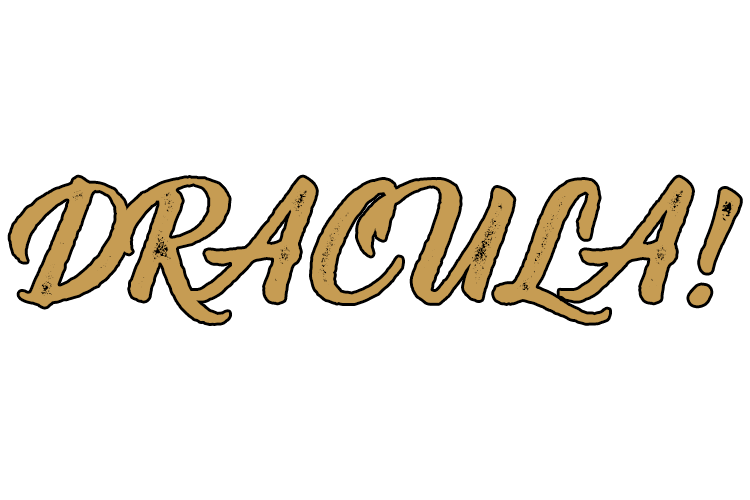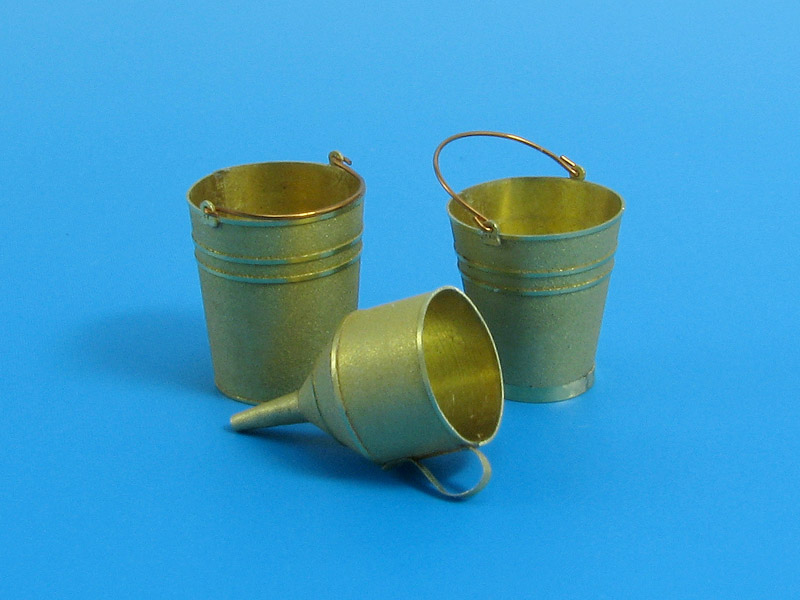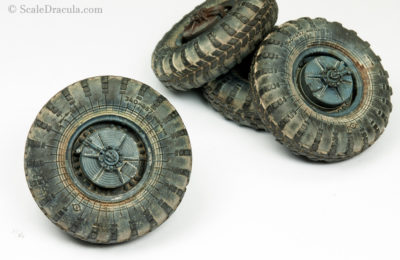My previous project, the Ferguson tractor, was a lot of fun. But now I going into the opposite direction. Last time I really enjoyed the liberty of building a civil, random vehicle not restrained by any historical facts. Now I’m going to let those restraints hit me big time.
Recreating a real vehicle from a photo is at so many levels the biggest challenge in this hobby. It means problems. And you’re going to stumble against problems every step of the way.
You need to analyse the photo, look at the vehicle’s distinctive features, put it in a historical context and understand all the factors that made it what it is on the picture.
And then you have to recreate it all…
I’ve always wanted to do something like this, firstly because it’s an ultimate challenge, and secondly because I really love to go through old photos, to analyse them and look for all the little details. It’s like a riddle that needs to be solved.
I took some time searching for a subject of this project. I wanted a fair challenge but not a ‘mission impossible’ kind of stuff. But when I came across this monster, I was looking no further.

The Soviet ZSU-57-2, a double-barrelled killing machine. It wasn’t an obvious choice because I’ve usually concentrated on WWII subjects in my previous builts. But just look at it, this thing is brutal.
A pinch of history
During the WWII the air force for the first time proved its tactical and strategical value. It became clear that the ground units needed constant AA cover or they would face obliteration.
Both sides of the conflict started to develop the idea of a self-propelled AA-gun that would accompany the advancing troops during the whole campaign- stationary AA defence just wasn’t enough anymore. Just before the end of the war, the Germans sent to fight one of the first mass-produced SPAAGs: the Wirbelwind. The Hungarian 40M Nimród was another contestant in this race.


ZSU-57-2 was Soviet Russia’s second attempt to create a self-propelled anti-air cannon. The first one was ZSU-37 that managed to get a into fight during the war but was a flawed design.
ZSU-57-2 was a much better construction armed with two 57mm S-68 cannons (hence its name). The design was based on T-54 tank, with the chassis shortened to four wheels at each side.
ZSU-57 had two killer autocannons and a decent firing range of 4000 meters, but the lack of modern equipment such as a radar soon made it obsolete. The Russians started to develop a more sophisticated vehicle- ZSU-23-4 Shilka. ZSU-57 on the other hand was offered to satellite countries and Soviet allies. The double-barrelled monsters soon spread across the world from Poland to North Vietnam.
The analysis
First thing I did was to take a closer look at the photo. It didn’t take me long to establish that this particular ZSU-57 fought in Bosnia not so long ago. (to be honest: it’s said so on the wikipedia page where I found the photo…)
The conflict in Bosnia was a dirty, dirty war that tore apart former Yugoslavia in the ’90s. This particular vehicle served in Bosnian Serb militia, forces loyal to Serbian cause. I don’t want to go deeper into this- trust me, it was a nasty war. Let’s talk about the tank instead.

The vehicle on the photo looks like a Soviet version of ZSU-57 (Eastern German tanks had different fenders and equipment). It was obviously modified including the superstructure on the turret and the rear net box replaced with an armoured cover. Also, the vehicle had its front and rear fenders removed. There is an ammo crate attached to the front armour and there is something on the turret that appears to be a machine gun covered with a tarp.
Let’s concentrate on the superstructure for a second.

I’m guessing it’s an improvised armour that was meant to cover the crew from aerial attacks. It makes sense as the Serb troops faced NATO jets blazing them from the sky during the Joint Endeavour Operation.
I initially thought the thing is made entirely of metal plates, but then I realized these are rubber sheets.
As you can see below the Serbs had a thing for covering their tanks with rubber. I don’t understand the purpose though. If it was a way of hiding the vehicle’s heat signature against NATO rockets, I doubt if it was a successful trick. Or maybe it somehow protected against RPG-style rockets? Can someone explain?
The rear structure on the turret was also meant to provide additional cover for the crew. At the same time it served the similar cause as the original net box- it was used to gather the empty shells leaving the cannon. We can’t see much of it from this angle but it’s very rusty and was made out of armour plates.
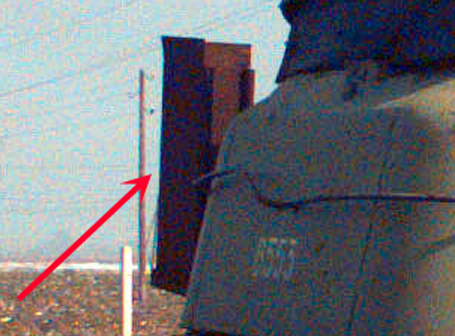
I can’t really identify the front ammo box, but it is definitely of soviet origin. It has some substantial damage suggesting that it also was used as an additional protection from projectiles. I found a photo of a similar crate that will give me inspiration during the construction.


The tank almost looks like it was painted in some sort of sandy yellow shade. But the sunlight coming from the front makes the colour lighter than it really is. In fact it’s rather a standard pale green used in Yugoslavian army. Take a look at another Serbian ZSU.
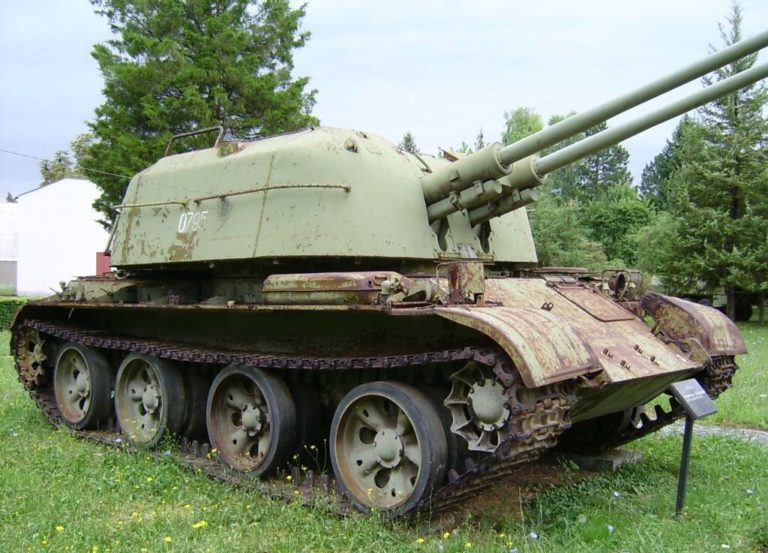
OK, I’m finally done with the analysis. Let’s go back to the actual modelling, shall we?
The model
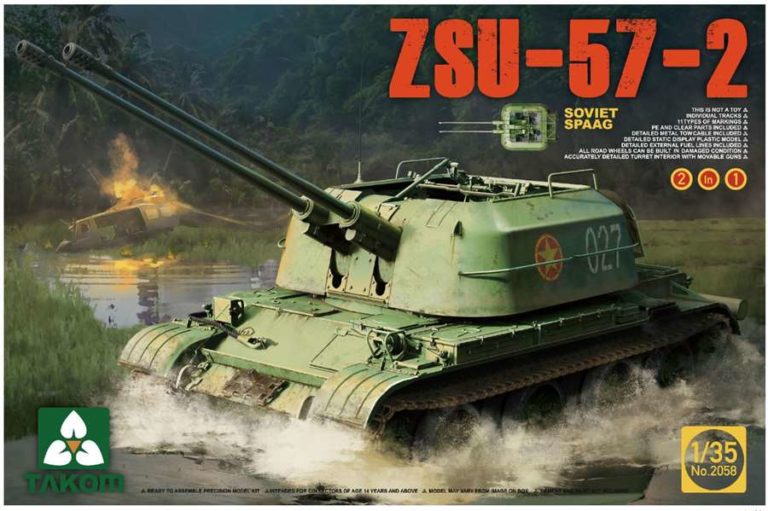
There are two models of ZSU-57 on the market: Trumpeter and Takom. I finally went for the latter assuming a newer model will be a bit more advanced. Also, Takom offered the decals for my version of ZSU which was very convenient.

Generally speaking the kit is very good, with high quality details and precise fit. Apart from a tonne of plastic, the box contains a little sheet of PE parts, a vinyl dust cover and a towing cord. I couldn’t help noticing a really nasty flash on some round parts, but overall I really like the kit. I feel like the philosophy behind it was: ‘let’s give them a kit good enough to be build without aftermarket parts.’
As much as I like this idea, I just had to buy some additional stuff, right?
I really like to use metal barrels, and especially in this model I think they are a must. The double cannon is what makes this tank to stand out from the crowd.
I bought an excellent kit of metal barrels by Aber. Take a look at the comparison.



I’ve always suspected that guys from ABER are a bit crazy. Look at the size of the smallest rivet. LOOK AT IT!!!
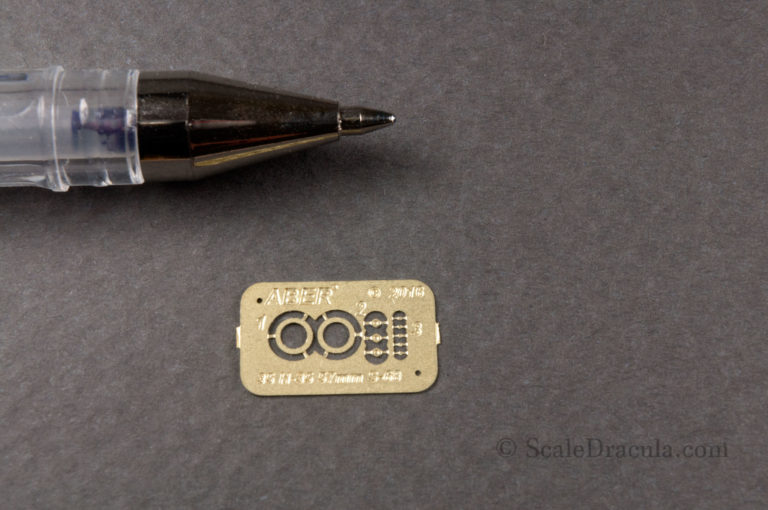
I’ve also acquired a set of movable metal tracks by MasterClub. I’ve been using their products for a while now and I must say I’m really happy with the quality. For linking the tracks together you use tiny resin pins instead of a wire. It is a very tedious work, but the effect is really spectacular.
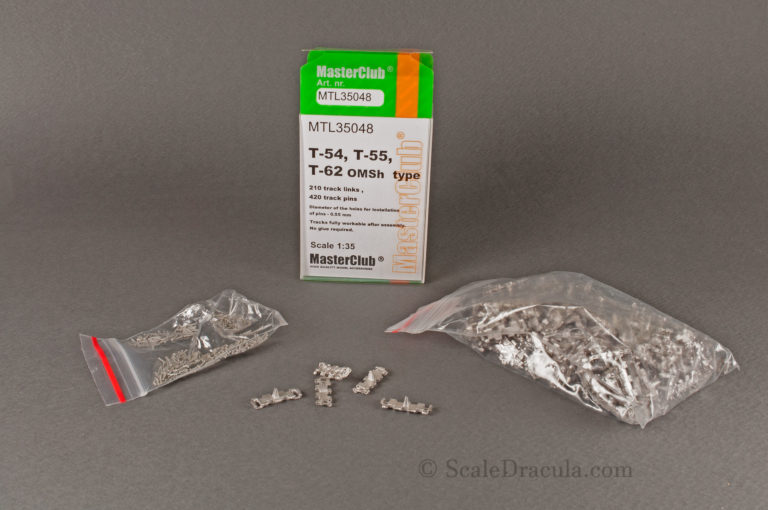
Just to be clear: Takom has done a very impressive work with their plastic tracks. I’m sure you can use them and get a fantastic result. But I really like the comfort of working with metal, movable tracks. Cleaning the plastic ones is a nightmare I’m always trying to avoid.


Last but no least, I decided to buy some additional items I will scatter on my ZSU. I often do it to give my usually green tanks a punch of colour and some personal touch. I’ve chosen a towing cable (the one in the Takom kit isn’t very good), a funnel with a bucket, and a set of Eastern European cargo bags. Because nothing says ‘slav’ quite like this colourful market bag. All of theses items were manufactured by Eureka XXL (photos below are from their site) and are of very good quality.
So that’s it. Now I just need to get to work. Hopefully I will be able to give you some details one the construction soon. Stick around!

